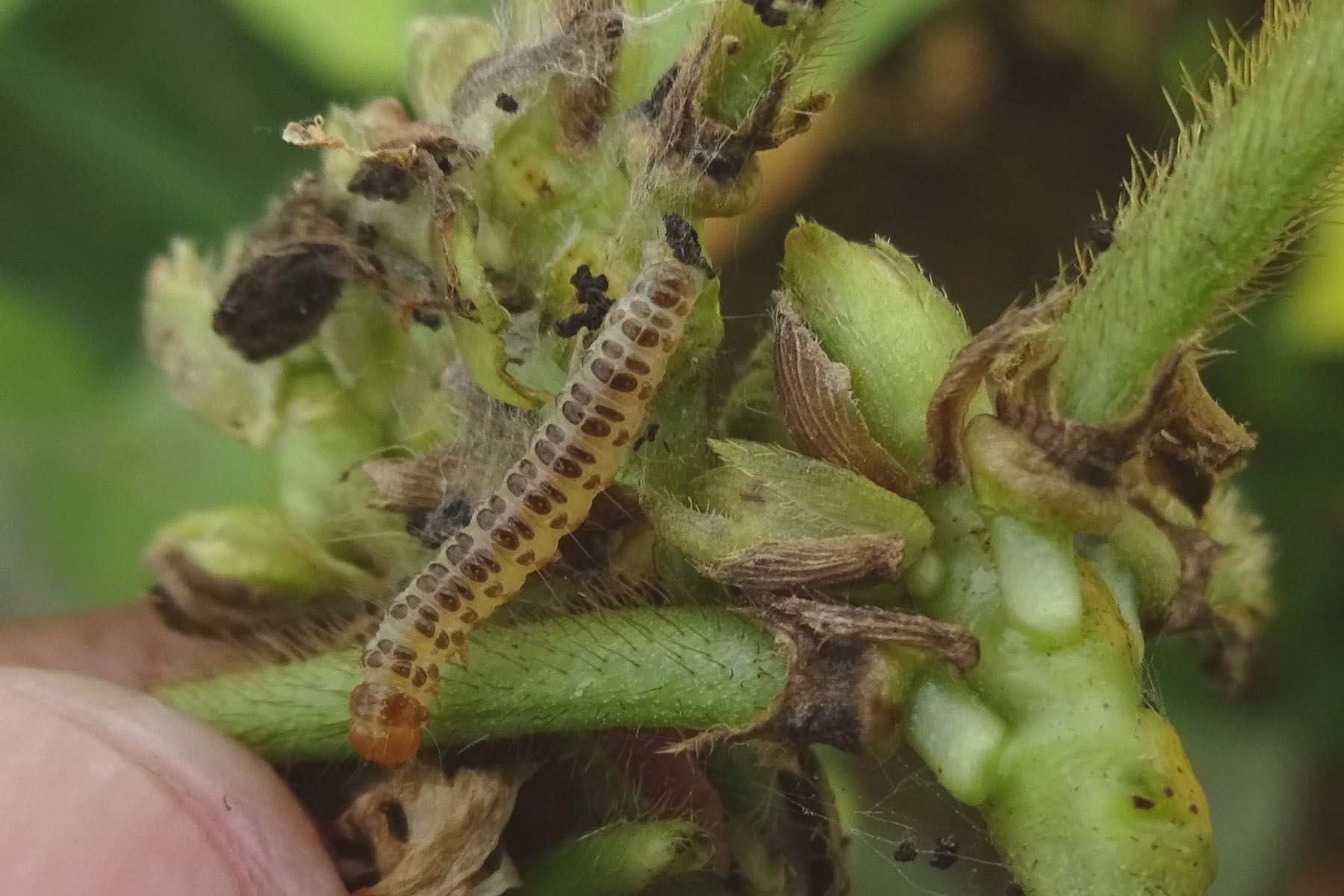Symptoms of damage
- Webbing together of flowers, pods and leaves with silken threads
- Damaged pods - darkened entry holes on the pods.
- First instar larvae prefer flowers and the third and fourth instar bore in to the pods
- Through the entry holes, water will enter into the pods causing rotting and browning of seeds.
Identification of the pest
Eggs:
- 400 scaly eggs singly or in clusters of 2 - 16 in the sepals, petals of the flower or buds or on pods.
* Egg period 2 – 3 days
Larva:
Young ones - dull white
* Grownup larvae - black-headed, with irregularly shaped brown or black spots on the dorsal, lateral and ventral surfaces of each body segment.
* Larval period - 8 to 14 days
Pupa:
- In double-walled pupal cell under the leaf debris or soil.
- * Pupal period - 5 to 15 days.
Moth:
- Light brown forewings with white markings and white transparent hind wings with brown irregular markings at the lateral edge.
- Life span - 7 to 10 days.
- At rest, the wings are rested always an angle to the surface.
Economic threshold level - 3 larvae / plant

 Webbings Larva
Webbings Larva

 Larva inside pod Adult Larva inside pod Adult
|
Integrated Management:
- The weed hosts such as Sesbania spp. has to be removed from the cropping area.
- Growing of sunnhemp as a trap crop. The plant is highly attractive to egg laying female moth but unsuitable for development of larvae.
- The avoidance of broad-spectrum insecticides before flowering encourages the natural enemies population
- Azadirachtin 0.03% WSP (300 PPM) @ 1000 ml/ac
- Bacillus thuringiensis var. kurstaki @ 200 – 250 ml/ac
- mamectin benzoate 5 SG @ 80 – 90 g/ac
- Indoxacarb 15.8 SC @ 133 ml/ac
- Chlorantraniliprole 18.5 SC @ 40 ml/acre
- Spinosad 45SC @ 50 – 64 ml/ac
- Flubendiamide 480 SC @ 40 ml/acre
|




